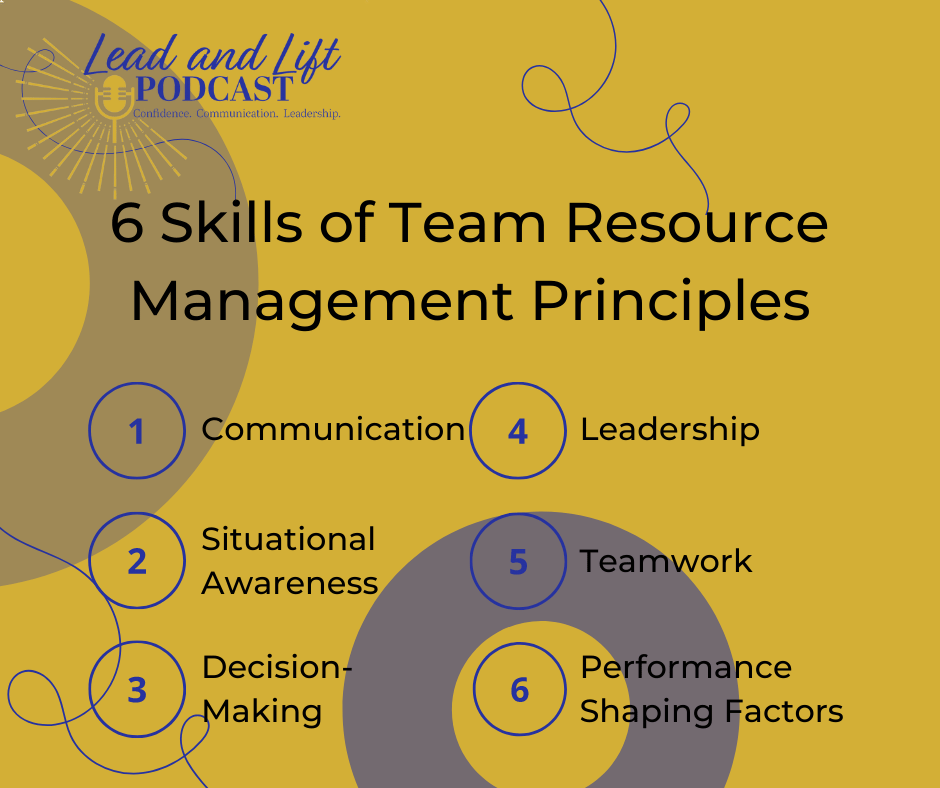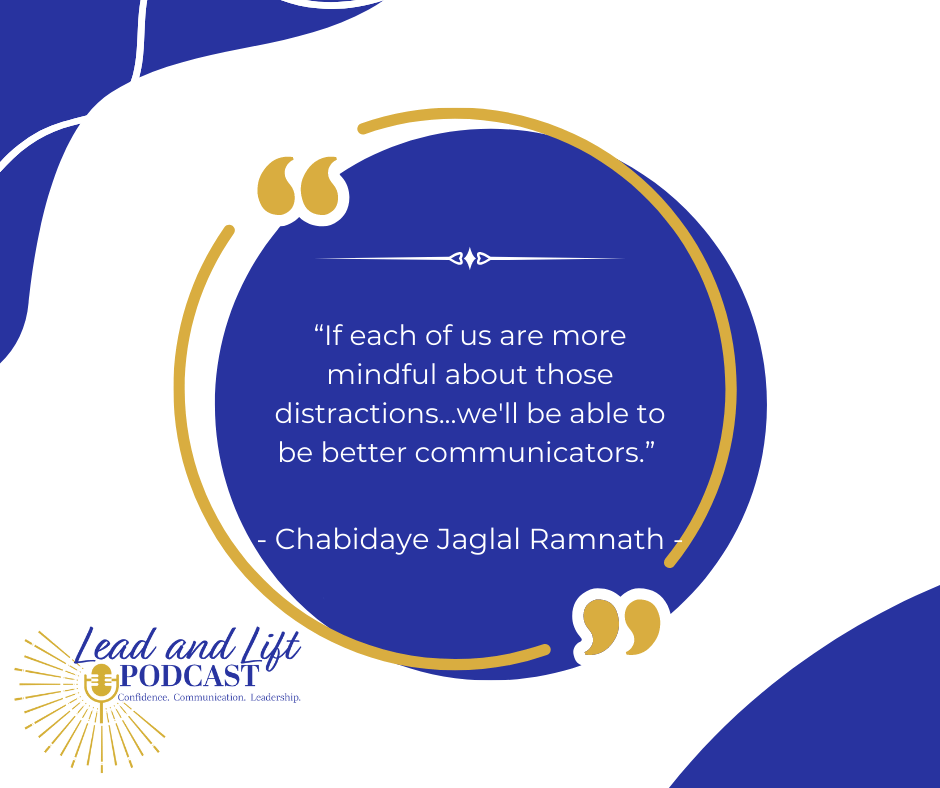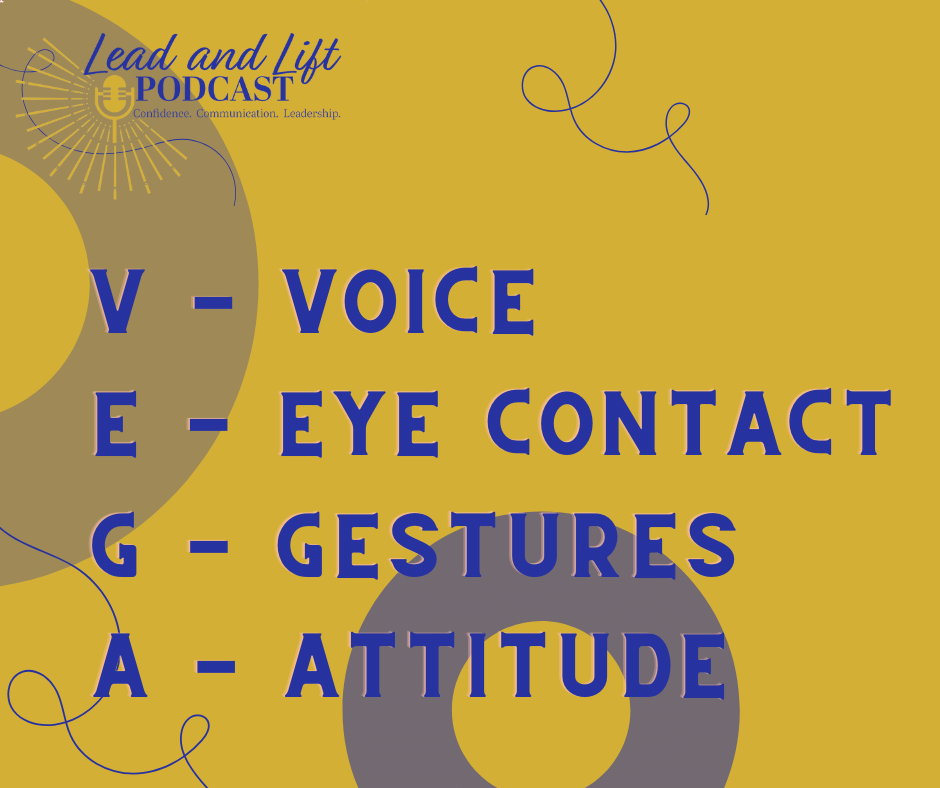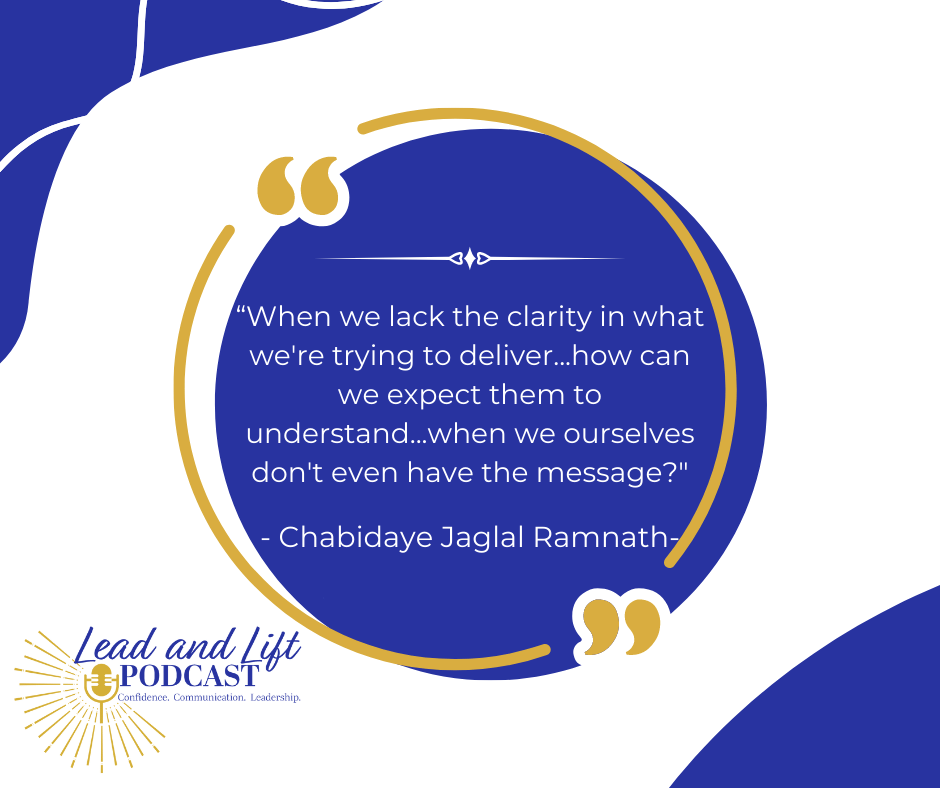Communication Basics

#LeadandLift | Episode 40 | Kurt Porter
Welcome back to Lead & Lift! Today I’m excited to share an amazing conversation I had with Kurt Porter on the Lead & Lift Podcast about communication. Kurt is the founder and executive director of Performance and Leadership Coaching. He’s a subject-matter expert in the continuous improvement process and team resource management principles.
One thing I love about Kurt is that he’s visited over 80 countries and has spent 30 years living overseas. He speaks both Vietnamese and Russian as well. I could talk about Kurt’s trips for a long time, but the goal for today is to talk about communication, and wow! Kurt brings a lot to the table.
Today I’ll share Kurt’s 3 tips in transmitting and receiving effective communication and an acronym of VEGA that will help you bring your best when communicating in any environment.
Kurt Porter’s Pivotal Moment that Energized his Passion for Communication:
Kurt took us back to his time in the military with the U.S. Navy where he was able to attend the Defense Language Institute to learn Vietnamese and Russian. Throughout his time in the Navy, he traveled to various countries and lived in Russia for more than 10 years setting him on a path where he found something he loves — communication.
He learned the importance of communication back in January 1989 as a diplomatic interpreter for the Department of Defense at a missile elimination facility in the former Soviet Union. This was a time when the U.S. was still working cooperatively with the Russians on a wide variety of issues.
During his time there, Kurt’s team chief needed to give some closing remarks, so he and Kurt practiced them with the team chief speaking in English as Kurt interpreted it into Russian. The practice went very well and 5 days later, Kurt asked to practice the remarks one more time with his team chief, but the response to Kurt was, “Ah, Kurt! You did so well last week! Just wing it.”
Fast-forward to the day of the closing remarks, and Kurt was in a room with about a hundred people, including 75 Society Officers, Majors, and above. Again, his team chief spoke in English while Kurt interpreted it into Russian, and it went pretty well. Then the Soviets, who had previously been taking photographs of the Americans, gave the pictures as a nice going-away gift. The team chief looked at them and said, “Oh, these are beautiful. These are wonderful. We will treasure them always.”
Kurt froze. He didn’t know what to do with the word treasure. It’s a noun, but the noun wouldn’t work as a verb. He saw 100 sets of eyes staring back at home so he blurted out in his best Russian, “These pictures are beautiful. We will love them forever.” The Soviets started tittering and some laughed out loud causing Kurt to say, “Oops, I guess that didn’t work.”
Afterward, the Russian interpreter approached Kurt with praise of what a good interpreter Kurt was and acknowledged having noticed Kurt struggled with the word treasure. The Russian interpreter further explained to Kurt that the word love has many different meanings in Russian, just like it does in English. There’s even a physical meaning of love in Russian, and unfortunately for Kurt, he picked the physical version when translating to Russian.
From that experience, Kurt was embarrassed at the moment, but he took away humility. While it was all about practicing and preparation, sometimes the communication is just not going to work.
Kurt learned a valuable lesson which he shared with us by saying…

After that experience, Kurt made it his goal to always work on all the tangibles and intangibles that he can so he can be the best he can be at communicating.
What Are Team Resource Management Principles?
Kurt taught me there are 6 soft skills that make up Team Resource Management Principles, AKA Crew Resource Management Skills. The first skill in the line-up is communication. I define communication as something we do all the time. We communicate to get a message across. We exchange words, gestures, or non-verbals and it’s all to get a message or perspective across to someone else.
While the goal is to express a message, there are also communication barriers we encounter on a daily basis whether it be at work or within our own homes.
Thankfully, we have people in our world like Kurt, who loves to share his expertise in this specific field of communication. According to Kurt, the Team Resource Management Principles are effectively used in high-risk, high-liability industries like the energy industry, aeronautics, and aviation in both civil and military situations and are effectively used in the corporate world.

That’s a big list with some big skills included, but today, we’re going to focus on #1 — Communication.
Kurt and I — and I’m sure many of you — agree we have to avoid communication failure as best as we can. To do so, Kurt speaks on communication breakdowns and strategies to try and avoid communication failure.
What is Communication & Why is it so Important?
I’ve previously shared my definition of communication, and here’s Kurt’s definition of communication: The transmittal and receipt of a message.
Sounds pretty simple, right? Yet there’s so much more to it than that. There are many different forms of communication. We have gestures, non-verbals, and words as forms of communication.
One of Kurt’s favorite forms of non-verbal communication is facial expressions because you can have 4 different facial expressions giving 4 different messages without moving any other parts of your body. All of those messages are simply reflected on your face.
Another form of non-verbal communication that is very big is gestures. Kurt, a passionate Scuba diver, has to use hand signals to communicate underwater. That form of communication is seen in many other jobs, professions, and in everyday life. Just a simple thumbs-up communicates to others that everything’s okay.
Words can be used to convey a message, but bear in mind that one word can have many different meanings. In English, we use words to mean different things than what the word really means, and I think that can cause a lot of confusion.
Effective communication is in all parts of our lives, and according to the Harvard Business Review, the #1 criteria for advancement and promotion for professionals is the ability to communicate effectively. If you don’t communicate effectively, you’re not going to get your message across, and at a bare minimum, the job is not going to be done properly.
As John Maxwell says, “We have to communicate to connect.”
What Types of Communication Barriers Can We Avoid?
Kurt agreed that there’s jargon, slang, and everyday words in English that mean different things as there are several different types of English. If an American asks a Brit how much does that cost and the response is 15 pounds, a lot of Americans would think, uh, I’m asking how much it costs, not how much it weighs.

Even though the base language is the same, the message has been lost due to cultural differences. This supports how culture affects communication.
Considering culture, think of the workplace. There you’ll find people from all different cultures communicating so quickly due to the rush-rush feeling in the corporate world. The transmittal of the message is delivered quickly so the individual can rush to the next meeting. But imagine those people receiving your message are translating what you say from their individual cultural viewpoint and the words may mean something different to them than they do to you because we don’t always use the literal meaning for words. This gives a lot of room for miscommunication to happen every time we open our mouths.
Kurt’s worldly experience and time working in international fields have shown him that when it comes to leadership, decision-making, and especially communication, there is the American way, the Norwegian way, the Thai way, the Russian way, etc. But none of those ways are wrong, they’re just different. Kurt does not necessarily think one way is better than another way, but that it’s just the way people grew up. People use the cultural values they had imprinted on them.
We, as effective communicators, need to be aware of those various perspectives and cultural values as potentially being an advantage or a barrier we need to overcome when communicating.
I feel this is really important because a lot of times when we are communicating, we think the other person understands because they have filters. But for the person communicating the message, understanding and being aware of other people’s filters being different from our own, can help us in how we communicate and interact with others whether in business, at home, or in the workplace.
Another barrier Kurt touched on is distractions. Distractions can hinder effective communication. Always look around at the distractions, whether it’s in the field environment or in an office environment, and ask yourself: How can I minimize, if not entirely eliminate, the distractions?
I’m glad Kurt brought up distractions because, for many of us, distractions are a big factor in receiving the correct message. The cell phone is a big distraction. But also just sitting in a corporate office meeting with people walking by outside can easily distract us from listening to the speaker as we’re suddenly looking outside to see what’s happening. We have to be more mindful so we don’t become a part of causing communication failure.

The last barrier Kurt touched on is emotions. Emotions can certainly play a part in losing the message in both a professional and home environment. When emotions get in the way, people simply don’t understand each other. The emotions cloud the message for both the transmitter and the receiver.
Kurt Porter: How to Overcome Communication Barriers as a Transmitter & as a Receiver
Now that we’ve discussed barriers with Kurt, I will share the 3 tips Kurt has for ensuring we can overcome the barriers and effectively communicate. The tips all support Kurt’s belief that accountability, for both the transmitter and the receiver, is key to overcoming barriers.
We must be accountable to ourselves whether we’re in a formal environment standing in front of a large audience giving a keynote speech or whether we’re in a semi-formal environment in the office with 10-15 people for a business meeting.
To be accountable with communication, there are 3 things we need to make sure we're properly doing:

Be Clear — Your message must have a beginning, a middle, and an end. There needs to be
logical sequencing otherwise you’ll lose people if you’re drifting to one side or the other.
Be Concise — While you will have an overall message, don’t forget there are sub-messages within your overall message. All the sub-messages add up to your overall message, yet you still need to be short and sweet. No one will sit there, whether at a formal or semi-formal event, and listen to someone going on and on. If you’re not concise, you’ll lose people and your message.
Confirm Understanding — You can do this by asking open-ended questions as the transmitter or by paraphrasing the message you received from the speaker. As the transmitter asking questions, be specific so the receiver can give a specific answer. You have to ask questions in such a way that the person can come back and tell you what they understand and how they understand it by assessing the situation.
I fully support Kurt’s 3 C’s as the right thing to do, however, I often see these tips not being done by the communicator thus causing the communicator to create their own barriers.
I think back to the corporate world where bosses come into the meeting, speak about their big idea, and then tell their people to just go do it. This leaves people sitting there with questions because they don’t have the information the boss had and often the boss is so busy in this environment that they don’t have time for your questions. I’ve seen bosses tell individuals they ask too many questions or even get defensive. On the other hand, I’ve seen leaders encourage questions because a good leader knows you’re asking to understand so you can execute the task you’ve been given.
Kurt backs that scenario by saying we need to create a business culture where people know it’s okay to ask a question and that they won’t be slammed down or accused of delaying a meeting or work process. Communication is so important, and we all must understand that without superior communication we will not have an effective team.
Remember both the transmitter and the receiver must maintain accountability to overcome communication barriers. We’re not always the transmitter. There are many times we are the receiver of messages. To ensure we are receiving the proper message, Kurt shares 2 points to be mindful of.
- Listen Actively — We, as people, will listen passively if not actively engaged by the transmitter of the message. So again, remove your distractions and maintain focus on the message at hand.
- Ask Questions — Never be afraid to ask a question. The only dumb question is the one that’s never asked. If you don’t understand, you must seek clarification.
How to Be a Better Transmitter with VEGA
While Kurt was in the U.S. Navy, he went through instructor school and learned public speaking tips that work for all forms of communication. Whether you’re a keynote speaker or a mid-level manager conducting an informal team building or project management session within the office, the acronym VEGA will apply and improve the transmission of your message.

Voice — You have to project. People have to hear you. You cannot mumble or speak in a monotone voice. You can have the best information of all time, but if you’re speaking monotone, no one will get it. They’ll tune you out. Speak with enthusiasm, inflection, and change your tone. Tone is so important in a message. You can use the same words but send an entirely different message with the tone of your voice. So bring the passion and bring the energy. If you don’t have it, why should your audience?
Eye Contact — It’s always good to do a general sweep of the room. Don’t get caught up in an old, ineffective tip of focusing on a spot on the wall. People will just wonder what you’re looking at. Instead, practice a general sweep of the audience, but watch out for the “friendly face syndrome” where you see someone nodding their head and giving good answers causing you to engage only with that individual. The other people in the room will begin listening passively and your message gets lost.
Gestures — Gestures can emphasize your message to make a point but should be kept to a minimum. Don’t overuse gestures otherwise, you’ll look like you’re conducting a symphony. Another gesture to watch out for is ticks. We all get a little nervous and have physical and verbal ticks such as repeatedly relying on a cliche phrase.
Attitude — You must plan, prepare, practice, and perform/produce. You must implement everything you’ve planned, prepared, and practiced. Even an informal meeting between 6-7 people in the office should not be a last-minute, winged conversation. You’ll lose the ability to clearly transmit your message.
Improve Your Communication Today!
I love discussing communication because it’s something we can always work on. We can always do better with it. Communication is so critical for everything we do daily, and we’re so fortunate to have vast resources and access to the knowledge shared by others, including Kurt.
Kurt has broken down communication into the transmitter and the receiver, and I love that he says we need to plan and stop winging it.

So take the time to plan, prepare, and practice for meetings with your team or even that meeting you have at home with your kids or your spouse because they are all very important relationships and communications in our life.
Kurt leaves us with his final words of wisdom by saying, “Don’t assume people understand you. Make sure of it.”
I thank Kurt for sharing his words of wisdom so we can all better share our words of wisdom with a message that will be clear, concise, and confirmed.
Remember: You have the ability to lead and lift others along your journey.
Leave a 5-Star Rating & Positive Review on Apple Podcasts!
This helps me support more people - just like you- gain more joy and fulfillment in their business and personal life.
Links mentioned in this episode:
Links mentioned in this episode:
Stay connected with the latest episodes via email
Expert interviews, actionable takeaways and behind-the-scenes Leadership, Communication and Confidence secrets from experts and so much more, delivered to your inbox weekly.
Don't worry, your information will not be shared.

